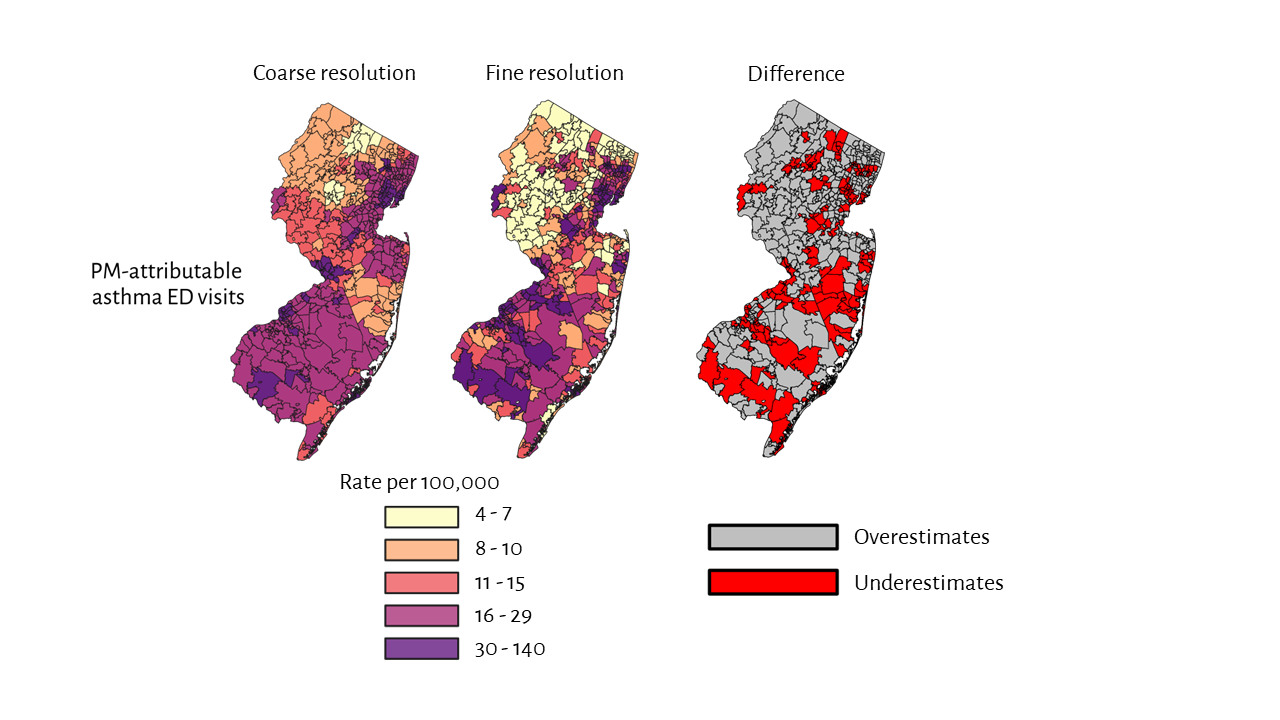Tom Neltner, Senior Director, Safer Chemicals Initiative
Note: This is the second of three blogs in this series. Click here for Blog 1 or Blog 3.
On January 24, FDA released draft action levels for lead in foods intended for babies and young toddlers.1 For most of these foods, the limit would be 10 parts per billion (ppb). FDA proposed a less-protective limit of 20 ppb for dry infant cereals and single-ingredient root vegetable products (i.e., carrots or sweet potatoes) because these products may have greater lead contamination levels. This proposal is a key step in implementing the agency’s Closer to Zero Action Plan.
Overall, FDA fixed several problems we highlighted in our Unleaded Juice series about the agency’s draft action levels for lead in juice, which it released in April 2022. However, significant issues remain, especially regarding the agency’s transparency, that undermine the credibility—and ultimately the effectiveness—of the action levels.
We discuss the proposed action levels and recommendations for more protective limits as well as specific research needs in separate blogs. Here, we take a deeper dive into FDA’s approach to setting these action levels.
Action Levels v. Regulatory Standards
FDA’s regulation at 21 C.F.R. § 109.6 addresses unavoidable contaminants in foods. It says FDA should use action levels when “technological or other changes that might affect the appropriateness of the tolerance are foreseeable in the near future.” If the agency does not foresee changes that would reduce the contamination, the regulation indicates it should set tolerances through rulemaking. By issuing action levels, FDA is affirming its commitment to continuous improvement —a key element in its Closer to Zero Action Plan.
In general, FDA develops action levels through guidance rather than rulemaking because it claims that the process enables the agency to move more quickly and to make updates more easily. Guidance has typically been subject to less stringent interagency review by the White House’s Office of Management and Budget (OMB).2
Nonetheless, FDA’s action levels for lead and inorganic arsenic in food have undergone OMB review, and that review has been quite lengthy.3 The delays have been significant enough that FDA revised its Closer to Zero Action Plan in January by:
- Changing its commitment to publish draft action levels for lead and arsenic to only submitting the document for interagency review. These documents are not public until finalized.
- Eliminating its commitments to finalize all of its draft action levels.
- Dropping the word “Action” from the title of the program.
Lack of Transparency in Decision-Making Undermines Credibility and Effectiveness
We do not suggest that action levels need to undergo the full regulatory interagency review by OMB. However, there are elements of that review that would improve the transparency and credibility of the decision, as well as the effectiveness of the action levels. They might also accelerate OMB review. Therefore, we recommend:
Explaining the options the agency considered and why it selected the action level described in the guidance.
FDA’s current approach only compares the selected option to the status quo. We know many of the excellent FDA staff working on the issue and how seriously they approach this effort. They surely considered many variations before settling on the proposed option. However, that information is largely omitted from the proposed guidance and supporting materials. This omission makes it more difficult to provide constructive comments to the agency and undermines the credibility of the decision.
Estimating dietary exposures that protect more than just the 90th percentile of children. FDA typically uses the 90th percentile to evaluate exposure to contaminants or additives. We have not seen a rationale for selecting this value over more protective ones—like the 95th percentile commonly used in Europe for food or, in the U.S., using the 97.5th percentile to set an elevated blood lead level (CDC) or the 99th percentile for pesticides in the U.S.
As we explained in a blog on the lead-in-juice proposal, while percentiles may seem abstract, we think it is important to recognize that, in this case, they represent lead-exposed children. Using the 90th percentile means that the 2.4 million children ages 1 to 6 years who are exposed to higher levels of lead are not taken into account.4 When including children younger than age 1, the number is even greater.
Calculating the socioeconomic benefits of the options considered and the one selected. As we explained in a blog on the lead-in-juice proposal, we encourage FDA to use methods developed by EPA (and accepted by OMB) to quantify the societal benefits of reducing young children’s exposure to lead. We applied that method to estimate that a 6% reduction in exposure for children younger than six years of age would yield $1 billion per year in benefits.We think this approach is a valuable tool to help the agency and stakeholders consider options. It would also prompt industry to provide realistic estimates of the cost to achieve the limits, rather than the vague claims it often relies on.
Transparently comparing the options considered to their impact on FDA’s Interim Reference Level (IRL) of 2.2 µg/day for children. In 2018, FDA established an IRL of 3.5 µg/day. The agency describes this value as the “maximum daily intake for lead from food” of lead for children. This is not a health-based level—rather it is a target the agency uses to drive lead contamination lower through its 2021 Closer to Zero Action Plan. Using FDA’s own analysis, we estimated that more than 2 million young children (aged 1-6 years) exceeded the IRL.
In July 2022, FDA lowered the IRL to 2.2 µg/day to conform to changes in CDC’s Blood Lead Reference Level. We estimated that 7 million young children (one-third of all children in this age group) exceeded this level and called on FDA to more rigorously compare its proposal—including options considered—to the IRL. We also asked the agency to estimate the number of children who would no longer exceed the IRL as a result of each option.In the draft guidance document, FDA states that under the status quo “the 90th percentile dietary exposures for babies and young children are below the IRL for lead of 2.2 μg/day for children.” While the agency shows that 90th percentile intake of specific groupings of foods are below the IRL, the agency provides no details for how it reached that conclusion, which should apply to dietary intake from all sources and not just those covered by the action levels.5
In other words, the approach would exclude the contribution from food not covered by the action levels, such as: 1) juices; 2) grain snacks (e.g., teething biscuits, cookies, and puffs); 3) fruits, cereals, and vegetables that parents use to make homemade foods for their babies and young toddlers, even though these products are often likely to be more contaminated, regardless of whether they are organic; and 4) foods marketed for a general audience such as applesauce and canned food, that parents (especially those on tight budgets) commonly feed to children.
In addition, the Agency’s assertion contradicts that of an FDA scientist who estimated in 2019 that children 12 to 36 months had a 90th percentile lead intake of 2.6 μg/day from their diet.6 It is unclear if this is due to differences in methodology, or a true decrease in exposure between then and now.
Assuming the claim is true and that the 90th percentile is at 2.2 μg/day, it still means that 10% of the approximately four million children born each year— or about 400,000 children – exceed the IRL. This illustrates the flaw in choosing the 90th percentile to represent an “upper bound” and “a health protective measure to account for babies and young children (0-23 months) who consume larger amounts of food and would therefore have higher exposures.”
As we have previously commented, FDA’s choice of the 90th percentile is out of step with other agencies, including CDC and EPA. The agency should not only be transparent about its calculations, but it should be clear how many children will be brought below the IRL with each option considered in order to provide critical context for the strengths and weaknesses of the agency’s analysis.
Posting all toxic element testing results—not just lead—for the data supporting the guidance. When FDA evaluates a sample for lead, the lab method also provides results for cadmium, arsenic, and mercury. This is important since FDA’s Closer to Zero Action Plan is focused on the health risks to young children from lead, cadmium, mercury, and inorganic arsenic and highlights the cumulative risks from these toxic elements.
Unfortunately, FDA only provides the results for lead when it posts the supporting data for both its draft action levels for lead in juice and lead in food intended for babies and young toddlers. The agency provides no explanation for why it withholds data for the other contaminants.We raised this concern in our comments on the draft action levels for lead in juice. FDA failed to address its lack of transparency despite the opportunity and minimal burden.
Posting a red-lined version of the document that compares the original version submitted to OMB for review and the final version. Agencies, including EPA and FDA, post a comparison that shows the changes made to its rule and accompanying justification as a result of the OMB review. FDA does not do that for OMB review of guidance. The comparison helps stakeholders understand the key issues, and it poses little burden to either agency. FDA should post the red-lined version.
In summary, FDA needs improve the process by which it proposes and finalizes action levels by improving its transparency. This will make the agency’s decisions more credible—an important consideration for ensuring industry compliance with the guidance.
Up Next: Unleading Baby Food: FDA, USDA, and industry need to invest in research to reduce lead in baby food
NOTES
1 FDA’s guidance refers to babies and young children. However, the action levels only apply to foods intended for children younger than 24 months, a very narrow definition of young children, especially since children up to six years of age are particularly vulnerable to the harm to their brain from lead. Other federal agencies set standards for this broader age range. Toddlers are generally considered to be between 1 and 3 years of age. Therefore, we use the term “toddlers” to avoid confusion.
2 Specifically, OMB’s Office of Information and Regulatory Affairs (OIRA).
3 For example: 1) Lead in food intended for babies and young toddlers where proposed guidance was under OMB review for 9 months; 2) Lead in juice where proposed guidance was under OMB review for 13 months; 3) Inorganic arsenic in infant rice cereal where final guidance was under OMB review for 4 months; and 4) Inorganic arsenic in apple juice where final guidance has been under OMB review for 21 months and counting.
4 Approximately 4 million children are born each year in the United States. Over a six-year period, that would mean ~24 million children in the age range.
5 The three values in the sixth column of Table 4 add up to 2.02 μg/day but that is not a valid method for 90th percentiles.
6 Based on the hybrid estimate from the report. Note that the lower bound is 1.8 and upper bound 4.4 μg/day.


















